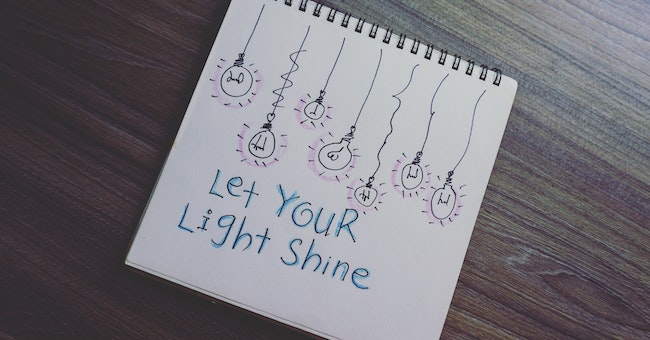Best Sustainable Sewing Online Classes Guide

Introduction
Embrace sustainability in your sewing journey with online classes that focus on eco-friendly techniques, cater to different skill levels, and offer specialized projects. Whether you're a beginner or an experienced sewist, there's a sustainable sewing class that suits your interests and goals. Discover the joy of creating beautiful, functional items while minimizing waste and contributing to a more environmentally conscious approach to sewing.
Exploring Eco-Friendly Techniques in Online Courses
Learn a variety of eco-friendly sewing techniques that promote sustainability in your projects. From hand sewing to machine sewing, appliqué to embroidery, and quilting to upcycling, these classes provide comprehensive instruction on techniques that reduce waste, utilize organic or recycled materials, and encourage sustainable practices. Recommended online classes include:
This course from focuses on various aspects of sustainable fashion design and garment construction. Here's a breakdown of what the course covers:
Developing Personal Style: The course emphasizes the importance of personal style and guides you on how to develop your own unique sense of fashion.
Materials and Sewing Skills: You will learn about the materials required for the course and the basic sewing skills needed to create the garment. Selina provides advice on combining colors and patterns and sourcing fabric. You will also learn how to prepare your materials for cutting.
Building a Prototype: With Selina as your guide, you will proceed to build a prototype of a blouse step by step. This includes printing the pattern, cutting out the fabric, and assembling each piece, such as the sleeves, bodice, and hem.
Refining the Prototype: After constructing the prototype, you will try it on and identify any imperfections or adjustments needed. These issues will be addressed before proceeding to cut the final fabric.
Sewing the Final Garment: Using the sewing techniques covered earlier in the course, you will sew the final garment, ensuring a professional finish. Paying attention to details such as matching thread is emphasized.
Customization and Styling: The course demonstrates how to customize your top and provides ideas for styling it in different ways to maximize its versatility and wearability.
Caring for Your Clothes: Selina discusses the importance of proper garment care and shares advice on how to make your clothes last longer.
This course offers practical guidance and hands-on learning, taking you through the process of creating a blouse while incorporating elements of fashion design, sewing skills, personal style development, and garment care.
This course delves into the social and environmental impacts of the fashion industry. Here's an overview of the topics covered:
Exploration of Extractive and Linear Practices: The course examines the fashion industry's extractive and linear practices from a resource and materials-focused perspective. You will gain an understanding of the industry's current practices and their implications.
Importance of a Diverse and Responsible Materials Mix: The course emphasizes the significance of a diverse and responsibly created materials mix for a fashion industry that aligns with planetary sustainability goals. You will learn about the need for sustainable material choices and their impact on the future of fashion.
Environmental Impacts on the Carbon Cycle: The course explores the fashion industry's role in affecting the carbon cycle and the broader environmental impacts. You will gain insights into the carbon emissions associated with the industry and the necessity for new models and practices to address this imbalance.
Intersections of Fashion with Environmental and Social Justice: To provide a holistic understanding, the course examines the interconnectedness of the fashion industry with environmental and social justice issues. You will learn how sustainable changes in the industry can have wider positive impacts on both people and the planet.
Regenerative Design and Sustainable Solutions: The course explores initiatives such as regenerative design that are influencing the fashion industry and driving sustainable change. You will discover organizations and practices that are actively working towards a more sustainable and responsible fashion ecosystem.
By the end of the course, you will have developed baseline sustainability literacy and knowledge specific to the fashion industry. You will understand the complexities of the industry's role in the climate crisis, the potential of regenerative design, the importance of whole systems thinking, and the interrelationships between social and environmental resources and practices within the fashion industry.
Best Sustainable Sewing Online Classes Guide
How to Find Sewing Courses Tailored to Different Skill Levels
When searching for sewing courses tailored to different skill levels, there are several options available to suit your specific needs and experience. Many sewing schools and academies offer courses designed for beginners, intermediate learners, and advanced sewists. These courses aim to provide a progressive learning experience that allows individuals to build upon their existing skills or start from scratch.
One way to find sewing courses tailored to different skill levels is to search for local sewing schools or academies in your area. These institutions often offer a range of classes or workshops specifically designed for beginners, intermediate learners, and advanced sewists. They may have structured programs or individual courses that cater to each skill level.
Online platforms and websites also offer sewing courses that are tailored to different skill levels. Platforms like Superprof, Tailor Academy, and Skillshare offer online classes suitable for beginners, intermediate learners, and advanced sewists. These courses often include video tutorials, step-by-step instructions, and interactive learning materials to help you develop your sewing skills at your own pace.
Another option is to join sewing communities or forums where experienced sewists share their knowledge and recommend courses or resources for different skill levels. These communities can provide valuable insights, tips, and recommendations on where to find the best sewing courses tailored to your specific needs.
Specialized Sustainable Sewing Projects
Specialized sustainable sewing projects focus on creating eco-friendly and socially responsible sewing items that promote sustainable practices. These projects often involve using repurposed or recycled materials, reducing waste, and considering the environmental impact of the sewing process. Here are a few examples of specialized sustainable sewing projects:
Makeup Remover Rounds: These reusable cotton pads or rounds are an alternative to disposable makeup remover wipes. By sewing these rounds from sustainable fabric materials like organic cotton or bamboo, you can reduce waste and promote a more sustainable beauty routine.
Easy DIY Cloth Napkins: Sewing cloth napkins allows you to replace disposable paper napkins with a reusable option. By using sustainable fabric choices and incorporating decorative stitching techniques, you can create stylish and eco-friendly napkins for everyday use or special occasions.
Utensil Roll: A utensil roll is a convenient way to carry reusable cutlery, straws, and other utensils while avoiding single-use plastic alternatives. By sewing a utensil roll with sustainable materials like linen or organic cotton, you can promote zero-waste dining and encourage others to adopt more sustainable practices.
Upcycled Projects: Repurposing old clothing, fabrics, or household items into new creations is another aspect of specialized sustainable sewing. Examples include transforming old jeans into tote bags, repurposing curtains into pillow covers, or creating patchwork quilts from fabric scraps.
Zero-Waste Sewing: Zero-waste sewing projects aim to minimize fabric waste by utilizing pattern cutting techniques that maximize the use of fabric. This approach often involves creating garments or accessories with little to no leftover scraps. By embracing zero-waste sewing practices, you can contribute to reducing textile waste and conserving resources.
Sewing for Specific Populations
Sewing for specific populations involves creating sewing projects tailored to the needs and interests of particular groups of people. This can include individuals with specific abilities, age groups, genders, or cultural backgrounds. The goal is to provide customized sewing experiences and address the unique requirements and preferences of these populations. Here are a few examples of sewing for specific populations:
Adaptive Clothing: Sewing for individuals with disabilities or limited mobility involves designing and creating garments that accommodate their specific needs. This may include adaptive features such as adjustable closures, easy-to-use fasteners, or modifications to improve comfort and accessibility.
Children's Sewing Projects: Sewing projects designed specifically for children can introduce them to the world of sewing in a fun and age-appropriate way. These projects often focus on simple patterns, safety considerations, and engaging themes to spark their creativity and develop their sewing skills.
Sewing for Cultural Attire: Many cultures have traditional clothing styles or garments with specific sewing techniques. Sewing for specific populations may involve creating culturally significant attire, such as traditional dresses, robes, or ceremonial garments that represent and celebrate a particular cultural heritage.
Maternity and Nursing Clothing: Sewing projects can be tailored to accommodate the unique needs of pregnant individuals or nursing mothers. This can include sewing maternity clothes with adjustable waistbands or designing nursing-friendly garments with discreet openings for easy breastfeeding.
Sustainable Sewing for Environmental Groups: Sewing projects can align with the interests of environmental groups or sustainability-minded individuals. These projects may involve using eco-friendly fabrics, repurposing materials, or creating reusable items that promote sustainable living practices.
Conclusion
Embrace sustainable sewing practices by enrolling in online classes that cover eco-friendly techniques, cater to different skill levels, offer specialized projects, and provide access to supportive communities and resources. Start your journey towards creating beautiful, ethical, and environmentally conscious sewing projects today. Together, let's make a positive impact on the planet through sustainable sewing.





